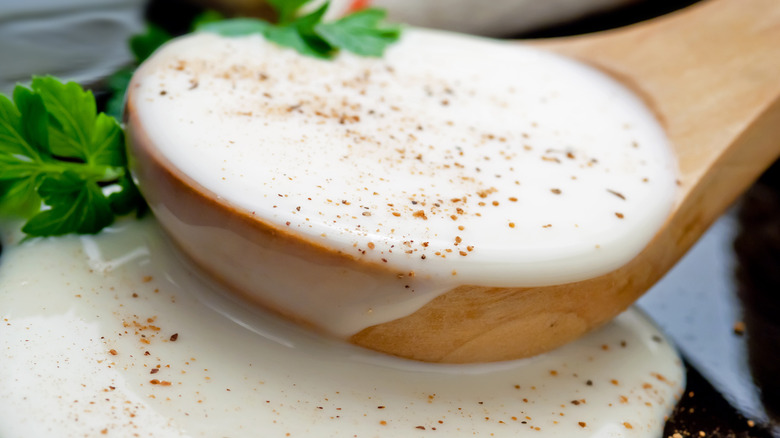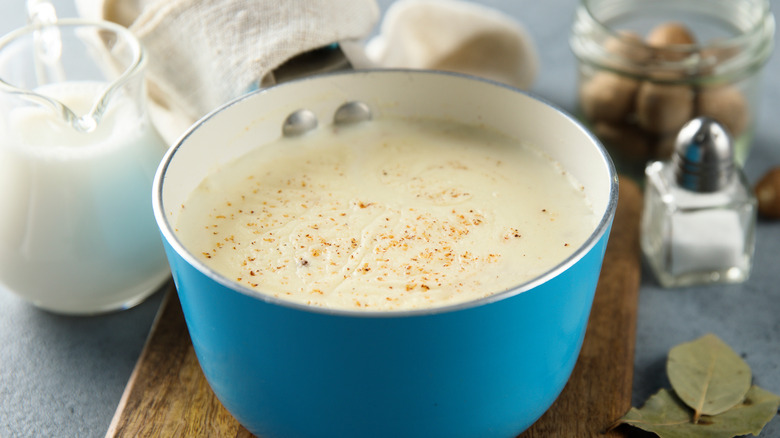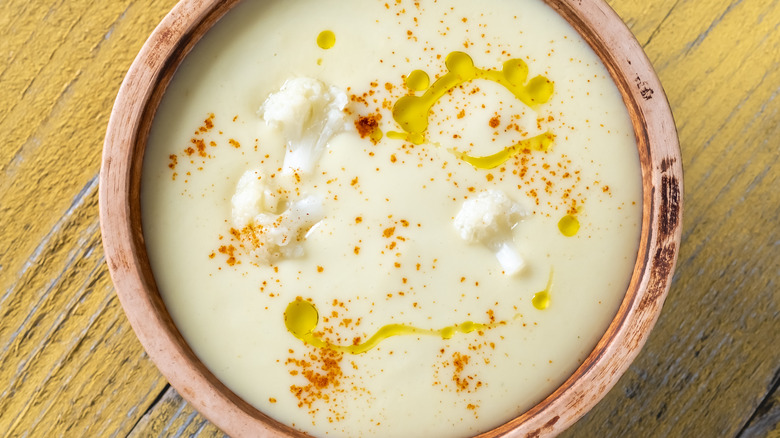Béchamel Vs. Velouté Sauce: What's The Difference?
Béchamel and velouté sauces are staples in French cuisine, both of which are considered to be two of the five mother sauces. They generally elevate an array of delicious meals, from pasta and soup to chicken and fish. But while they are similar, these sauces each have a different staple ingredient in their roux and have separate uses. The biggest difference is that béchamel uses milk, cream, or a dairy-free substitute mixed into its roux, while velouté has stock instead — usually chicken, fish, or vegetable to keep the sauce white.
As one has a dairy base and the other has a stock, they aren't necessarily interchangeable. Béchamel is often used in pasta dishes, such as macaroni and cheese and lasagne, or it's baked with vegetables in an au gratin style. Velouté sauce is typically used to take chicken or fish to the next level, or it can be stirred into soup for added creaminess.
What is béchamel, anyway?
Béchamel, also referred to as white sauce, is creamy thanks to adding dairy to the roux base. A roux is made by melting butter then stirring in flour to thicken it. After that, you increase the temperature and consistently stir in the milk, cream, or dairy-free substitute, and add salt and nutmeg. The trick is to make a smooth sauce with no lumps. When it's thickened, it's ready to be used. In France, the milk is infused with bay leaves and onion before mixing into the roux.
As well as using silky, white, creamy béchamel sauce to make perfect lasagna and other pasta dishes, you can also use it as a base for alternative sauces. These include mornay sauce, which has Gruyère and Parmesan cheeses added, and is poured on fish, pasta, and eggs. Or Nantua sauce, made with added crayfish or shrimp, and served with fish and seafood. If you have leftover béchamel, it can be frozen for up to three months, or kept in your fridge for up to a week.
The deal with velouté sauce
Velouté is another easy sauce that can elevate many dishes on your rotating menu. You make it by melting butter, whisking in flour, then slowly pouring in chicken, vegetable, or fish stock — and occasionally beef stock — and seasoning with salt and pepper. It can also be turned into other sauces with the addition of other ingredients. For example, use it as a curry base by adding coconut milk, individual spices, or curry powder. Or try allemande sauce, which uses veal stock and egg yolk to thicken it, and is mostly served with meat.
How can you use this sauce other than turning it into different sauces? Try it poured on steamed vegetables, such as broccoli or carrots. It's also delicious on a simple pasta dish, similar to how you use béchamel. Velouté tastes great served with seafood and fish dishes such as shrimp scampi. And it's a great base for making creamy soups, such as cauliflower or mushroom. Similar to the béchamel sauce, you can store any extra velouté in an airtight container in the fridge for a week or in the freezer for up to three months.


